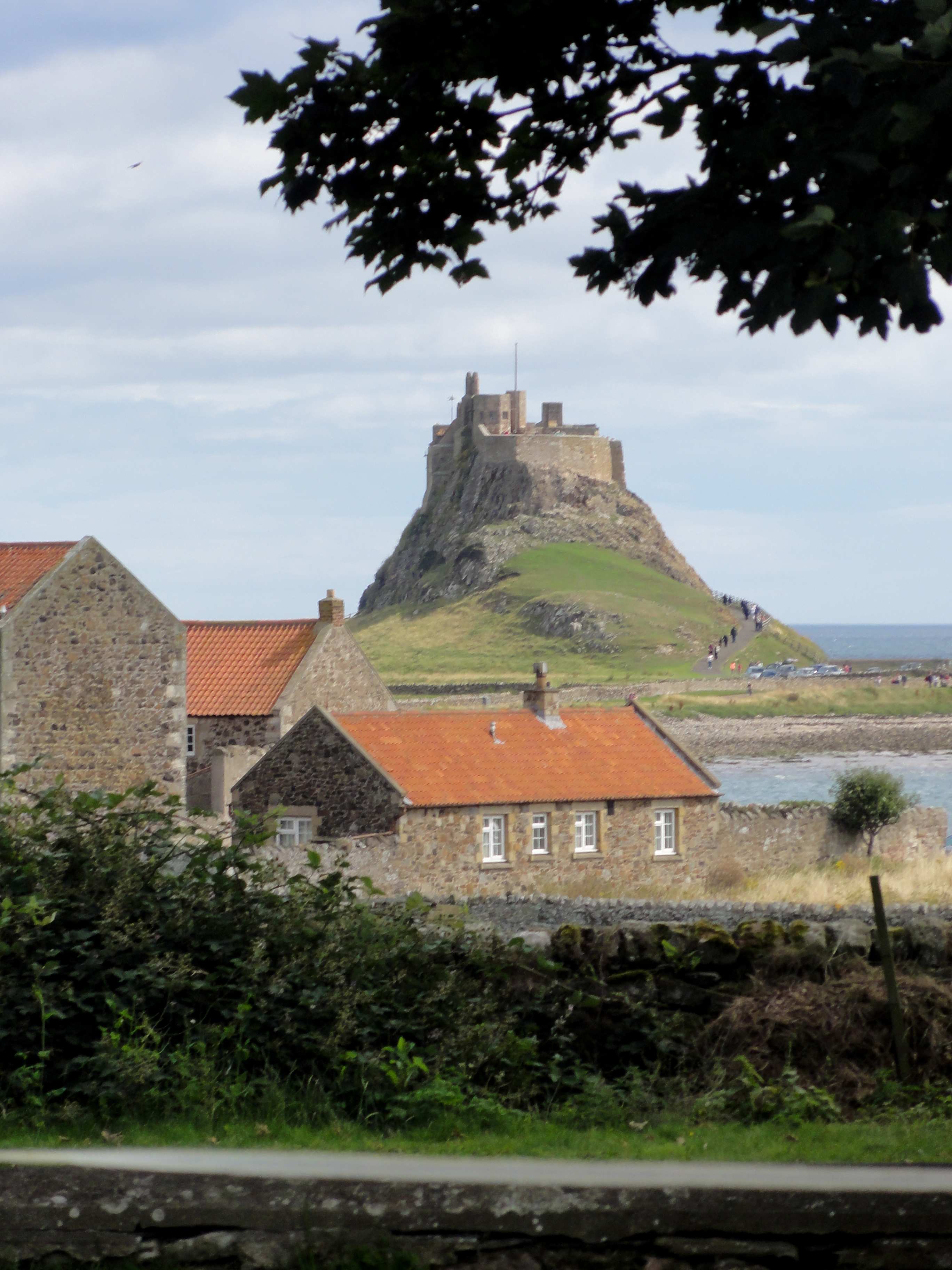 Driving across the border between Scotland and England on the east coast, we caught our first glimpse of the tiny island called Lindisfarne, which–we were to learn–profoundly influenced the culture and worldview of a fledgling England late in the first millennium.
Driving across the border between Scotland and England on the east coast, we caught our first glimpse of the tiny island called Lindisfarne, which–we were to learn–profoundly influenced the culture and worldview of a fledgling England late in the first millennium.
The silhouette of castle ruins on the island’s rocky bluff was echoed by the fainter outline on the horizon of a more ancient fortification on the mainland. This was Bamburgh, the former home of King Oswald, who invited monks from the Celtic monastery of Iona to begin a mission in his realm of Northumbria in 635.
Our group of fourteen fellow-pilgrims on the Celtic Heritage Tour had gathered a few days earlier in Dublin to explore the influence of the gospels in shaping Ireland and Britain’s story. A brief flight from Belfast had brought us to Edinburgh where a tantalisingly short tour of the Royal Mile had introduced us to the rich and sacrifical history of Scotland, from early Celts to modern missionaries like David Livingstone and Eric Liddell.
Now we followed the last phase of Aidan’s journey from Iona on Scotland’s west coast to Lindisfarne in response to the king’s invitation. Less than twenty kilometres south of the border, we turned off the coastal road to follow the signs to Holy Island, which is cut off from the mainland twice daily by a tidal channel over a kilometre wide. We had timed our arrival to coincide with the opening of the causeway, allowing visitors and residents to follow a row of wooden stakes across the sands to and from the island.
Cultural landmark
Today the island is populated by about 160 residents. Some are retired while others make a living from fishing or from the over 650,000 visitors each year from all over the world. These include bird-watchers, walkers, fishing-parties, artists, writers, photographers and. of course, pilgrims.
Our guide, Andy Raine, took us to the statue of Aidan close to the ruins of the Lindisfarne Priory, and told us how the Celtic saint crossed the sands countless times to preach the gospel in the length and the breadth of Northumbria, often with King Oswald translating for him from Irish Gaelic into Anglo-Saxon or Old English.
Little remained of Aidan’s original monastery, the priory having been founded in the 11th century after the Norman invasion, and the castle dating from the 16th.
The very first Viking raid on British soil took place on this island in 793, leading to invasion and settlement, and the eventual abandonment of Lindisfarne by the monks in 875.
Yet the literary legacy of Aidan’s community includes what has been called ‘one of the greatest landmarks of human cultural achievement’. Those words come from the opening paragraph of the guidebook to an exhibition of the Lindisfarne Gospels this summer in the cathedral city of Durham, a little over an hour’s drive south of the island.
Travel writer William Dalrymple describes the I as ‘one of the world’s greatest works of art in book form’, and ‘a crucial document in the history of Western Christianity’. The Sunday Times called it ‘the book that made Britain’.
Diversity in unity
The Lindisfarne Gospels were created on Holy Island by Eadfrith, Bishop of Lindisfarne, 1300 years ago, to honour the memory of Cuthbert, born the year Aidan settled on Holy Island. As Cuthbert grew up and entered monastic life, Aidan sent the brothers Cedd and Chad on successful apostolic missions to the East Saxons (Essex) and the Mercians (the Midlands). Cuthbert became prior at Lindisfarne in 664, the year of the fateful Synod of Whitby when Rome demanded–and acquired–dominance over the independent and decentralised Celtic church.
Cuthbert the bridge-builder accepted the Whitby ruling. He stressed unity with diversity as he worked to reform the community and gained a widespread reputation as a holy man and worker of miracles. When the island was abandoned in face of the Viking threat, Cuthbert’s body and the Gospels crafted in his memory began an eventful journey ending 120 years later in Durham.
The Gospels richly embody Cuthbert’s emphasis on diversity in unity. Breath-taking in detail, colour and ornate design, the Gospels weave elements of book-making, ornamentation, script, illustration, theme and symbolism not only from the Irish Celtic and Roman traditions that were fused at Whitby, or from the scribe’s Anglo-Saxon roots. Experts have also identified elements from Coptic, Byzantine, Oriental and British Celtic sources.
The story of Lindisfarne and of the Gospels inspire many today to pray and strive towards a weaving together of God-given strands of spirituality which over time have become separated.
Till next week,
Jeff Fountain
see: www.bl.uk/onlinegallery/sacredtexts/lindisfarne.html
Till next week,

[…] Saxon and Viking indigenous art styles supplemented texts in the Book of Kells, the Lindisfarne Gospels and the Jelling Stone, for example. Celtic monasteries and convents became centres for […]
[…] indigeni dei Celti, dei Sassoni e dei Vichinghi arricchirono i testi del Libro di Kells, dell’Evangeliario di Lindisfarne e delle Pietre di Jelling, ad esempio. I monasteri ed i conventi celtici diventarono dei centri […]
[…] des Celtes, des Saxons et des Vikings enrichirent les textes du Livre de Kells, des Evangiles de Lindisfarne et des Pierres de Jelling, par exemple. Les monastères et les couvents celtes […]